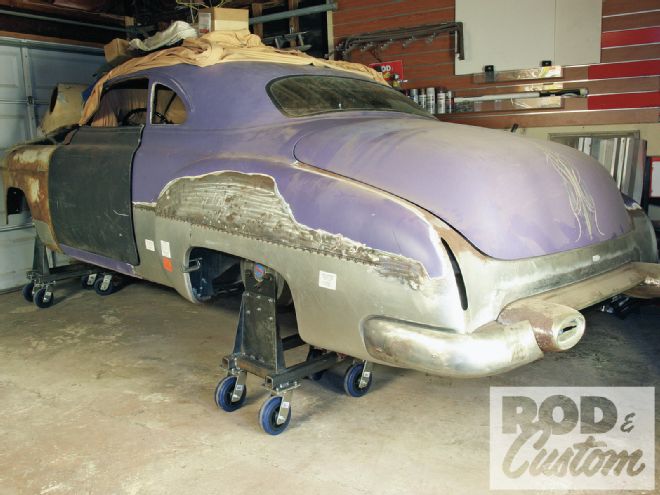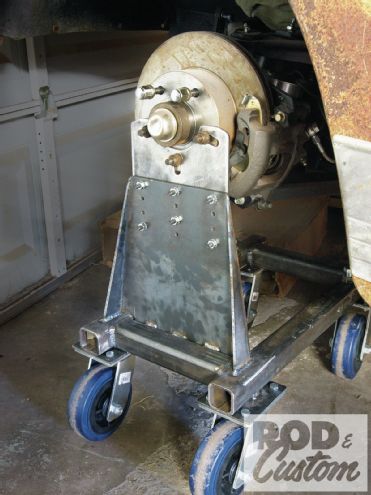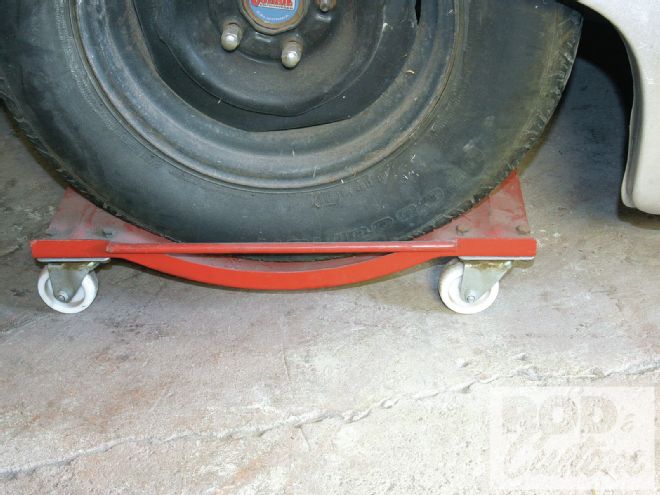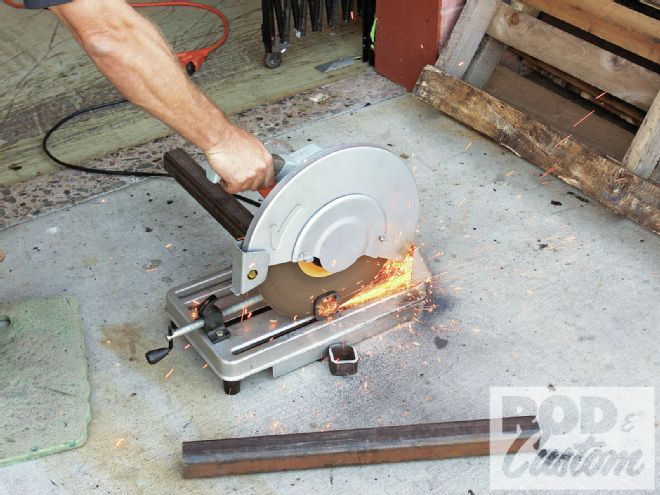
I know I’m not the only one with two projects in a two-car garage and who spends an inordinate amount of wasted time moving one or the other around to work on them. My roadster pickup runs and can be driven out of the garage, but the Purple Pig ’49 Chevy isn’t a runner yet (it’s close, but I know what I’m like, and if I get it running I’ll start driving it and never finish it!) and I can’t push it back in my garage on my own if I move it out. While I have a set of four-wheel dollies, not only are they hard to move over rough ground (and my garage floor ain’t the smoothest concrete; I’ve even been asked if it’s a dirt floor by people who’ve seen pictures of the car in there!), but invariably I’ll have the car up on jackstands and have to lower it onto the dollies to move it over just so I can get the pickup in at night.

The combination of maneuverability and wishing to keep the car at a working height for the excessive amount of bodywork I’m about to tackle, brought me, in the best “Necessity is the Mother of Invention” way, to the following solution: Four-wheel dollies that offer adjustable height and bolt to the car’s axles, giving access to the inner wheel arches, ease of working on the lower bodywork sections, the ability to simply push the car against the wall at the end of the day, or even turn it around in the garage without having to open the main door. Also, with the car raised off the ground, it’ll save my aching back while prepping the bodywork. So with the plans in my head, I went steel shopping.
 Many of you will have used these wheel dollies before, and know how hard, if not impossible, it can be to move those small casters on rough floors. However, they do have their uses.
Many of you will have used these wheel dollies before, and know how hard, if not impossible, it can be to move those small casters on rough floors. However, they do have their uses.
Now, be warned, if you feel like following and making a set of these yourself—and they really do save an awful lot of time—there’s quite a bit of fabrication, with 56 holes, 12 countersinks, and a bunch of plasma cutting in each dolly—and you’ll need four of ’em! There’s also a fair amount of welding. While the finished article doesn’t look like much effort went into them, it’s more than a hard weekend’s worth of work.
 I returned from the steel yard with lengths of 2x2x3/16-inch steel box section, and four 4-foot lengths of 1 1/2x1 1/2-inch box section. The former was then cut into eight 20-inch lengths and eight 10-inch lengths using a chop saw.
I returned from the steel yard with lengths of 2x2x3/16-inch steel box section, and four 4-foot lengths of 1 1/2x1 1/2-inch box section. The former was then cut into eight 20-inch lengths and eight 10-inch lengths using a chop saw.
When looking at the dollies, you may wonder why I chose to make the plates that bolt to the axles removable. Even though two of my cars have Chevy bolt patterns, the third is early Ford, and I wanted the dollies to be universal. With removable plates I have the option of fabricating another set for four-lug patterns, a jackstand-style top to clamp around rearends or framerails, or even a set of clamps that grab the lip along the bottom of rocker panels, as with many collision repair body jigs. While I don’t require any of these now, it pays to have the option later.
Footnote: Once completed, I realized there was a design flaw with the front pair of dollies. They will only work if there’s 0 degree of camber. As the Pig has a little negative camber, and early Ford frontends have a little positive camber, I’m going to have to add an adjustable pivot between the uprights and the axle plates for use on the frontends. That’ll have to wait however, as I ran out of time and energy prior to deadline.